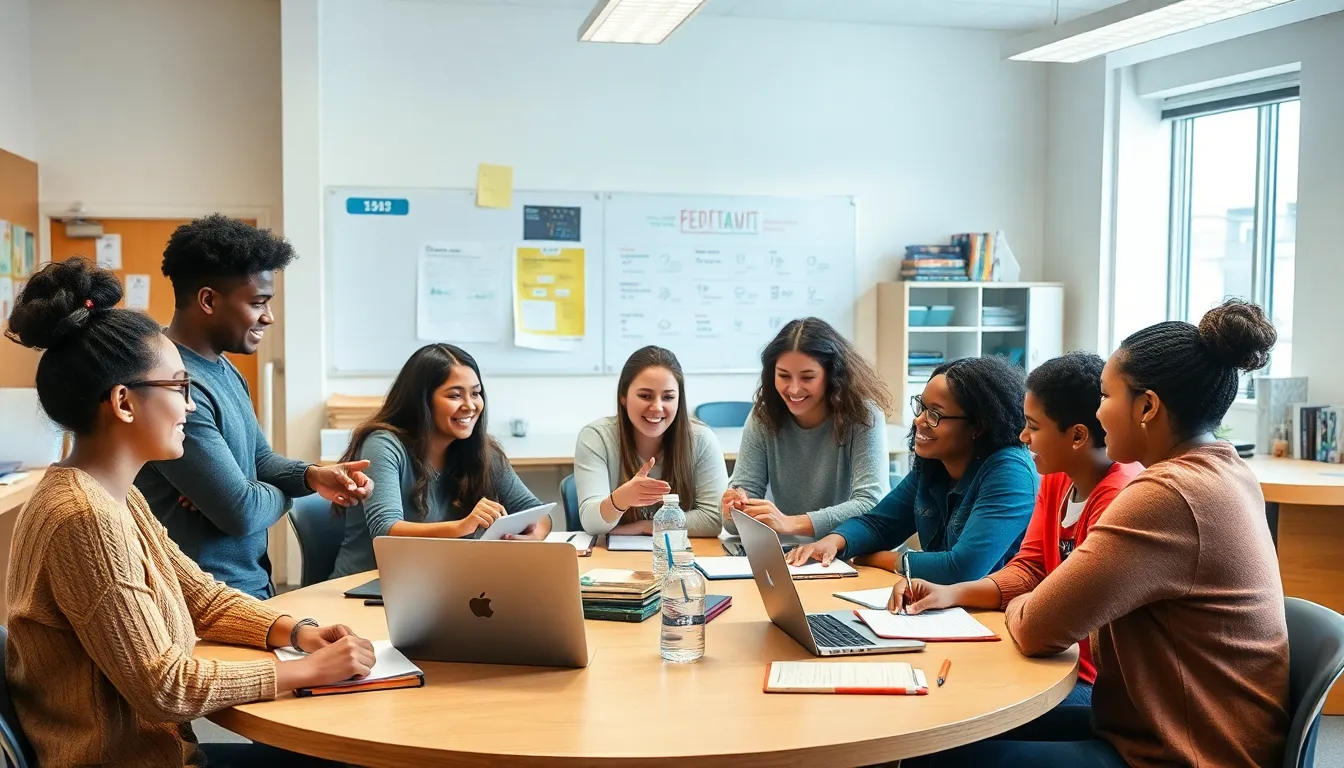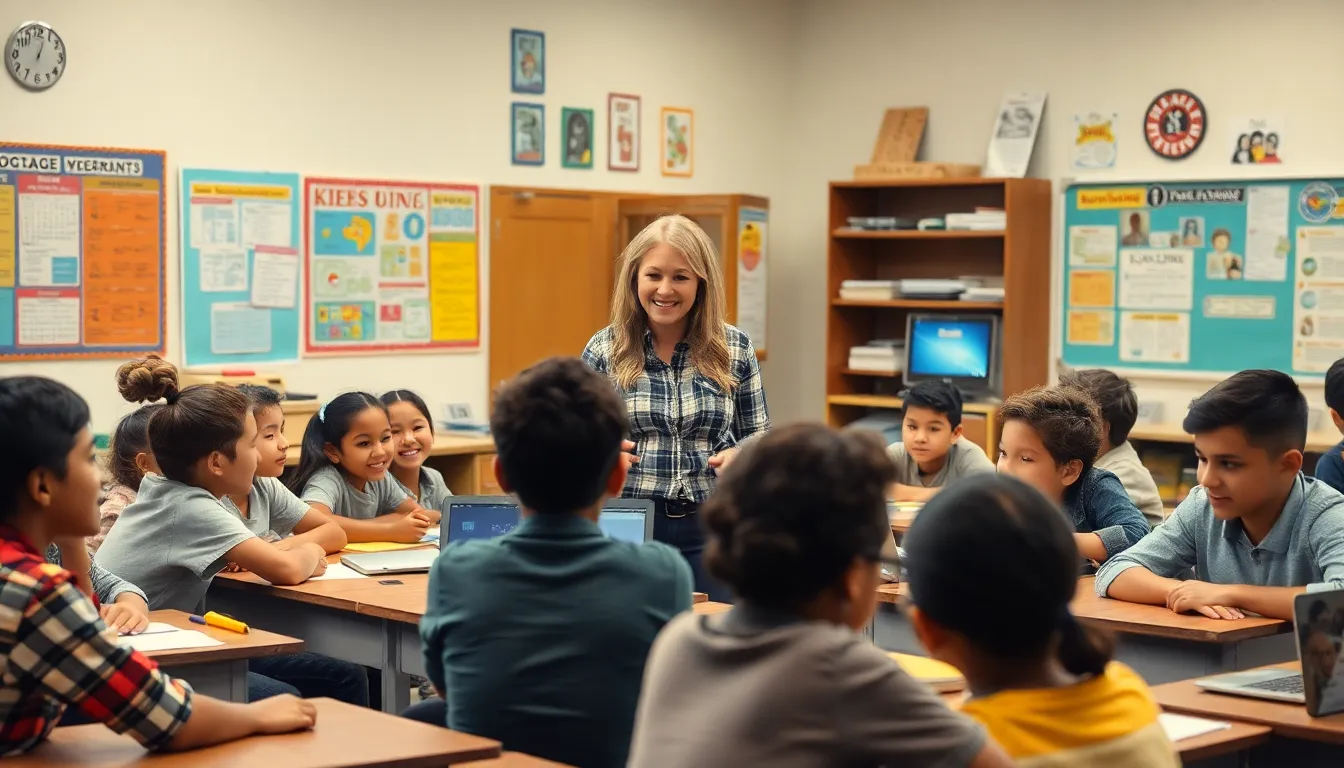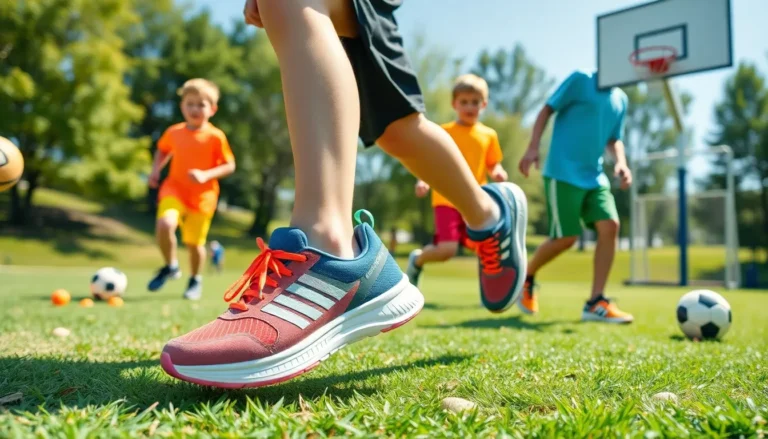In the world of education, teaching strategies are the secret sauce that can transform a mundane classroom into a vibrant learning hub. Imagine turning that sleepy student who can barely keep their eyes open into a curious learner who can’t wait to contribute. With the right techniques, it’s not just possible; it’s practically guaranteed!
Table of Contents
ToggleOverview of Teaching Strategies
Teaching strategies encompass various methods and techniques aimed at enhancing student learning. These approaches not only engage students but also cater to diverse learning styles. Active learning techniques promote participation through activities like group discussions and interactive projects.
Differentiated instruction tailors lessons to meet each student’s needs, ensuring varied pacing and complexity. Collaborative learning builds teamwork and communication skills, promoting an inclusive classroom environment.
Use of technology integrates tools such as videos, apps, and online platforms, expanding resources available to students. Feedback systems inform students of their progress, guiding them toward improvement.
Additionally, project-based learning encourages students to explore real-world problems, fostering critical thinking and creativity. Scaffolding supports learners by breaking tasks into manageable components, easing the learning process for complex concepts.
Examples abound of successful teaching strategies. Inquiry-based learning sparks curiosity, allowing students to drive their educational exploration. Mindfulness practices create a calm classroom atmosphere, enhancing focus and reducing stress.
Knowledge of these strategies helps educators design effective lessons that captivate students. Understanding their unique preferences allows teachers to implement methods that resonate. Embracing a variety of teaching strategies equips educators to meet the diverse needs of their classrooms.
Types of Teaching Strategies

Teaching strategies encompass various techniques aimed at enhancing student engagement and learning outcomes. Each approach addresses unique needs and promotes effective education.
Active Learning Strategies
Active learning strategies engage students directly in the learning process. Techniques include group discussions, peer teaching, and problem-solving activities. Through these practices, students take responsibility for their education and develop critical thinking skills. Research supports that students involved in active learning outperform their peers in traditional settings. Strategies like think-pair-share and case studies foster collaboration among students. These methods encourage deeper understanding of the subject matter and facilitate retention of information.
Collaborative Learning Strategies
Collaborative learning strategies focus on teamwork and collective problem-solving. In structured group activities, students work together to achieve common goals. These environments enhance communication skills and build interpersonal relationships. Teachers can implement jigsaw activities or group projects to promote peer interaction. Studies indicate that collaborative learning improves academic performance and boosts motivation. When students share diverse perspectives, they gain insights beyond individual understanding. This cooperative approach prepares learners for real-world challenges and emphasizes the value of collaboration.
Importance of Effective Teaching Strategies
Effective teaching strategies create profound impacts in the classroom. They build an environment where students willingly engage and participate.
Enhancing Student Engagement
Engagement spikes when teachers implement active learning techniques. Group discussions allow students to clarify their thoughts and share diverse perspectives. Peer teaching fosters a sense of ownership over learning as students explain concepts to one another. Interactive activities, such as role-playing and simulations, motivate students to immerse themselves in the subject matter. Research shows engaging students directly can elevate interest levels and academic performance. When learning environments feel dynamic and inclusive, students become eager participants.
Promoting Critical Thinking
Critical thinking flourishes in classrooms that emphasize inquiry-based learning. Questions that challenge assumptions encourage students to think deeply, assessing and analyzing information. Problem-solving activities stimulate intellectual curiosity, guiding students to explore solutions actively. Teamwork during collaborative projects promotes the exchange of ideas, enhancing cognitive skills. Utilizing strategies like jigsaw activities allows students to engage with content more thoroughly, resulting in higher-order thinking. Overall, fostering critical thinking prepares students for real-world challenges, equipping them with essential life skills.
Implementing Teaching Strategies in the Classroom
Effective implementation of teaching strategies requires careful planning and flexibility to adapt to student needs. Active learning techniques, such as group discussions and peer teaching, encourage direct student participation. These methods cultivate an environment where critical thinking skills flourish.
Collaborative learning strategies, particularly jigsaw activities and group projects, promote teamwork and enhance communication. Students strengthen their interpersonal relationships while solving problems together. Instructors regularly adjust group dynamics to maximize student interaction and motivation.
Technology integration further amplifies teaching strategies. It provides diverse resources that support inquiry-based learning. Interactive platforms foster critical thinking by challenging students with thought-provoking questions.
Feedback systems also play a crucial role in enhancing learning experiences. Through timely and constructive responses, students gain insights into their progress, refining their skills and understanding. Regular feedback loops establish a culture of improvement within the classroom.
Project-based learning is another effective approach that merges theoretical knowledge with practical application. By engaging students in real-world challenges, they learn to work independently and collaboratively. This strategy equips them with valuable skills necessary for future endeavors.
Mindfulness practices contribute to creating a positive classroom environment. Techniques, such as short meditation or breathing exercises, help students focus and reduce anxiety. When students feel emotionally supported, they show increased willingness to engage.
Incorporating these strategies consistently throughout lessons ensures that diverse learning styles are catered to. Educators recognize that understanding and applying varied approaches can profoundly impact student engagement and participation. Embracing this diversity in teaching techniques prepares students for the complexities of the real world, equipping them with essential life skills.
Challenges in Adopting New Teaching Strategies
Implementing new teaching strategies can pose several challenges for educators. Resistance to change often arises among teachers accustomed to traditional methods. Familiarity with existing practices can make it difficult for them to embrace innovative techniques.
Training and professional development are essential but frequently lacking. Many schools do not provide adequate resources for teachers to learn new strategies effectively. Insufficient training can lead to misunderstandings of how to apply these strategies in the classroom.
Time constraints also present a significant hurdle. Educators juggle multiple responsibilities, making it hard to dedicate time to explore and practice new methods. Streamlining the adoption of these strategies requires intentional planning and structured support.
Student diversity adds to the complexity of adopting new approaches. Different learning styles necessitate tailored strategies, which can overwhelm teachers when introducing change. Balancing the needs of all students while implementing innovative techniques challenges even the most experienced educators.
Moreover, assessment and evaluation systems sometimes do not align with new teaching strategies. Standardized testing often prioritizes specific information retention rather than critical thinking and collaborative skills. Shifting classroom practices without corresponding evaluation adjustments could hinder progress.
Collaboration among educators can enhance the adoption of new strategies. Sharing experiences and best practices fosters a supportive environment for change. Using peer feedback and teamwork while integrating new methods can boost confidence and effectiveness in the classroom.
Access to technology also plays a crucial role. Reliable tech resources can enhance teaching strategies and help engage students effectively. Limited access restricts educators from fully leveraging the benefits of modern techniques.
A comprehensive understanding of these challenges allows educators to navigate the complexities of adopting new teaching strategies successfully.
Effective teaching strategies are vital in creating an engaging and dynamic learning environment. By implementing diverse methods like active learning and collaborative techniques, educators can spark enthusiasm among students and cater to their unique learning styles. The integration of technology and mindfulness practices further enhances the classroom experience, promoting critical thinking and a supportive atmosphere.
While challenges exist in adopting these innovative approaches, collaboration and flexibility can pave the way for success. Embracing a variety of teaching strategies not only prepares students for academic challenges but also equips them with essential skills for their future endeavors. As educators continue to adapt and evolve, the impact of these strategies will resonate throughout their students’ lives.





